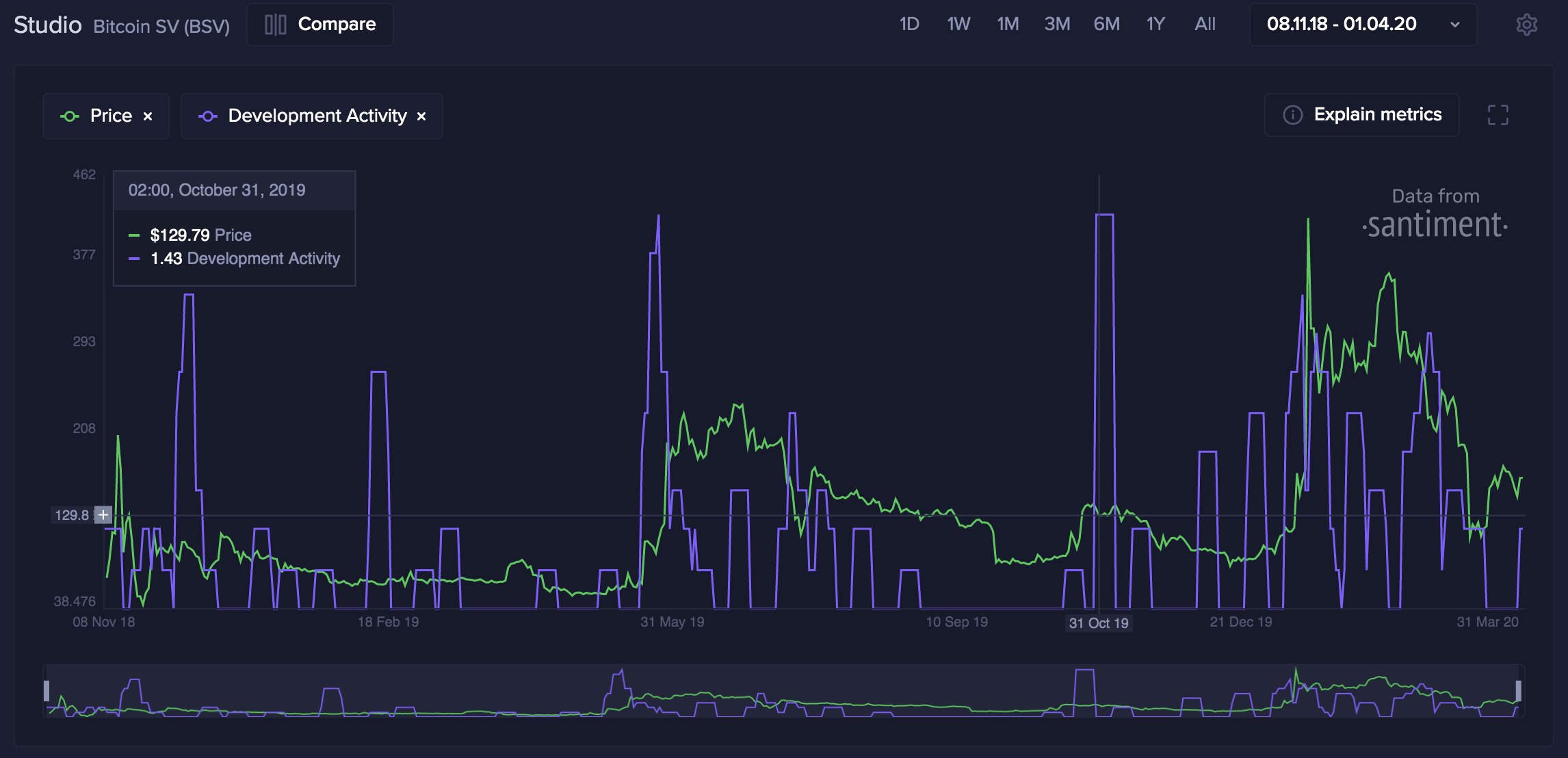Development Activity Metrics
Metrics
The development-related data allows the definition of different metrics. These metrics include:
- Development Activity - Ignore the non-development related events. Excluding this allows values of projects who use Github for issue tracking and projects who do not use Github for issue tracking to be faily compared
- Development Activity Contributors Count
- Track the number of unique development activity contributors.
- Github Activity - Count all events for a project.
- Github Activity Contributors Count - Track the number of unique github activity contributors.
Why Development Acitivty matters?
The development activity of a project that Santiment tracks is done in the project's public GitHub repositories. The work done in private repositories cannot be tracked. In crypto, a lot of the work is done in public repositories, so this metric is available for many projects.
A developer's time is an expensive resource, so high development activity implies that:
- The project is serious about its business proposition;
- The project will likely ship new features in the future and address existing issues;
- It's less likely that the project is just an exit scam.
Simply put, development-related metrics can be used to gauge a project's commitment to creating a working product, and continuously polishing and upgrading its features.
Note: Only development work done in public github repositories can be tracked. Work done in private/unknown repositories or public repositories outside GitHub won't be counted. In Github, switching a repository from private to public does not emit events for past actions, so the development activity will track only the work done after making the repository public.
How is development activity tracked?
Development-related metrics are using the events emitted by Github. The metrics do not use the number of commits in a repository.
When developers work they encapsulate their code changes in commits. When a repository page like this is opened in github one of the first things shown is the number of commits.

One naturally would think that counting commits is an accurate approximation of development activity. A lot of the data aggregators track the number of Github commits, an unfortunate solution that returns skewed data.
Why is counting commits not optimal?
There are a lot of projects that fork (copy everything up until this moment) other blockchains' source code and make small changes on top of it, without the intent of proposing these changes back to the original repository. The process of forking inherits all commits, but this is other people's work -- this is not work done by the team that makes the fork.
Example
For example, if a person forks the Bitcoin Github repository they will inherit all 40,000+ commits, while performing just one action of forking.
How Santiment measures development activity?
At Santiment, we implemented a more reliable approach tracking the number of Github events that the project generates. Pushing a commit generates an event, but there are also many other activities that generate an event:
- Creating an Issue
- Creating a Pull Request
- Commenting an issue/Pull Request
- Forking/starring/watching a repository
- many others.
More importantly, when a project is forked, it does not inherit any of the
already emitted events. Our custom method dramatically improves both accuracy
and serviceability of Github data. The reason is that the process of forking a
repository generates just a single ForkEvent instead creating an event for
every commit that gets inherited.
At the time of writing this the bitcoin repository has around 40k commits and Bitoin SV repository has around 18.9k commits. Let's take a look at the events counting approach:
Bitcoin: 
Bitcoin SV: 
We observe that Bitcoin has a high development activity all the time. Meanwhile, Bitcoin SV has 0 dev activity most of the time.
If you want to learn more about the difference - and the benefits of our bespoke approach - I highly suggest this piece by Valentin, our ex-CTO.
As a Trading Strategy
While not common, Development-related metrics can also be used as a novel trading strategy. Some time ago, we tested a portfolio of only the top ERC20 projects by development activity, refreshed each month.
We backtested the strategy from August 2017 to October 2018. The portfolio
1 turned a profit, but
didn't beat hodling BTC overall.

However, our portfolio was also more volatile than hodling over time, registering significantly larger tops in January and May of 2018. If you were to sell at one of those intersections instead, our Github portfolio would in fact be the winner.
As a custom metric, dev activity can help you understand a project's dedication to its product, and in turn - its end users.